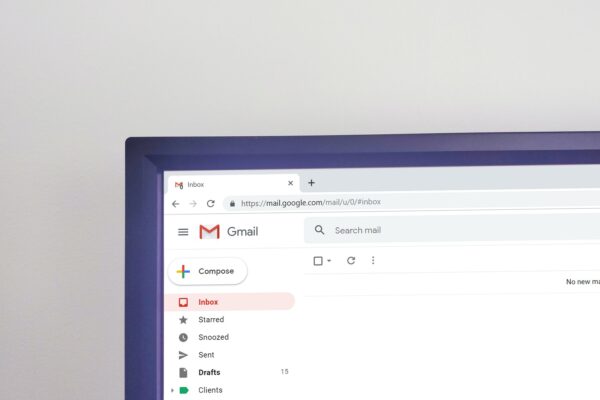The key to understanding your customers’ needs is to be proactive and open to learning from them. By actively seeking customer feedback, you can gain a deep understanding of their interests, challenges, and goals. Common types of customer needs include price, experience, function, feeling, compatibility, personal and social. Your ability to detect and currently interpret which of these needs is motivating your customer can favorably impact your overall success. But first you must understand if your customers’ needs are physical or psychological before you can determine if and how you can help them.
Physical or Psychological?
Customer needs fall into one of two often overlapping categories. Abraham Maslow, a leading psychologist, defined a hierarchy of needs with physical needs at the base of a multilayered pyramid.
The first category are physical needs and these are often the easiest to identify. They are also the easiest to satisfy. Physical needs are such things as food, water, and sleep – the essential things for life. If you are hungry, you visit the refrigerator. If you need to get to work when you have an empty gas tank, you visit a gas station. Looking for food in the refrigerator or buying gas for the car satisfy physical needs.
The second category are psychological needs and can be difficult to identify. These are often enormously powerful drivers in the decision process. Opening the door to a full refrigerator and calling out “there is nothing to eat in here” shifts the need from physical (I am hungry) to psychological (I am not satisfied with the choices I have). In the case of the empty fuel tank, bypassing one station because of the brand in hopes of finding your preferred brand may not be an option (running out of gas is never fun). Deciding whether you are going to buy the newest Apple, Samsung or LG smartphone is a decision around brand preference and loyalty. These are psychological choices. They are about the feelings invoked or satisfied.
Getting to Why
Understanding why customers buy a software product, consulting service or any other product is not any harder to understand than why people buy chips and a soda while filling up their car at the gas station. There is always a compelling event. Something broke, something failed, something changed, or something needs doing. A salesperson’s ability to ascertain that the hardware no longer works, that the application fails to manage certain conditions, or that the people responsible for delivery have moved on will mean the difference between sale and no sale.
Buyer Personas
Does your company have ideal customer profiles (ICP)? Marketing uses ICPs for target marketing while sales will use ICPs for outbound prospecting.
Markets and customer preferences can shift quickly. Current ICPs become stale if not updated often. When was the last time you took a good look at them? If you are in the technology space once a year might be adequate and more often when warranted such as when competitors change up their product or service offering. However, if you are in an industry that sells durable goods (for example household goods like appliances, furniture, etc.) ICP updates may not be needed very often.
Why do your customers buy from you? In a specialty market, you may be the only supplier and thus have a “corner on the market.” For example, if you are in the car business, are you the only dealer in town or are you located on the “auto mile” with a half dozen other brands? If the former case, you offer it and if the customer needs it they are likely to buy from you. In the latter case, brand preferences, pricing, styling and more, can drive purchasing behavior resulting in buyers crisscrossing the street among dealers.
In all situations there are brand loyalists who will not switch. Getting to why the customer walked through the front door of your store or picked up the phone and called you requires you use all your salesperson’s superpowers.
Customer Feedback
There is nothing more valuable than hearing directly from customers. Customer surveys, focus groups, and support and help desk requests offer varying degrees of insights into customer satisfaction and experience with your products and services.
Surveys and focus groups have a place in understanding customer satisfaction; however, they can give false signals. Understanding the motivation behind the folks responding to a survey gives clues. Highly satisfied customers may be more inclined to respond positively to surveys and participate in focus groups than their dissatisfied counterparts. This leads to something called confirmation bias. Confirmation bias happens when we are looking for and analyzing for a result that confirms our own perceptions. In focus groups this can occur when the facilitator has initial assumptions and solicits opinions in support of those assumptions.
Support and help desk tickets can provide deep insights into how products and services fail to satisfy customers’ needs. Monitoring and categorizing tickets can go a long way in improving all customers’ experiences with your products and services when it leads to changes in product design and implementation. If one customer finds a certain aspect of a product challenging, it is likely that other customers do too but just have not said anything about it, yet.
Competitor Analysis
Keep your customers close and your competitors closer. Customers’ perceptions as to whether your products and services fulfill their needs is often based on contours of your competitors’ offerings. It is so easy to compare offerings today online. Your customers are doing it and so should you. They are starting their buyer journey earlier and online, well before you even know that they are looking to make a purchase. By the time you are aware of them, they are already in the “buying zone.”
Try to step back and look at your offerings from the customer’s perspective. The marketing and sales experience around competitor offerings can give you insights into just how they “speak to customer needs.” Understanding how your competitors meet those needs can help you improve your product and service and overcome objections in head-to-head situations.
The story of the first production powered retractable hardtop starts in 1935 when Peugeot introduced the 402BL Eclipse Decaportable. But it was not until the 1959 Ford Fairlane 500 Skyliner, an American car with a retractable hardtop, was featured in a 50’s TV commercial with TV celebrities Lucille Ball and Ricky Arnaz where the announcer states “once again Ford goes first with the world’s most exciting automobile.” If you want to see a demonstration, there is a YouTube video of the vintage commercial. It was not until 1996 when the world celebrated the Mercedes Benz SLK Roadster with its retractable hardtop that there was so much excitement about a convertible. It took another seven years, until 2003, before Mercedes Benz unveiled the retractable hardtop on its SL line. Today, more than 64 years after Ford and 27 years after Mercedes Benz it is a novelty to see a soft-topped convertible from US, Asian or European automobile manufacturers.
Advertising buzz and 1950’s influencers come together in this example to highlight how the landscape of the “convertible” experience would be reshaped by these innovations for years to come.
Personal Connections
Put your customers first. Customers know when they are the least important part of the interaction. Most customers know when they are being “worked.” Even in business-to-business (B2B) sales where the company is the customer, there is still a person behind every decision to buy or not buy. Knowing what needs will be satisfied when they purchase can help shape their personal buyer journey.
By building strong personal relationships with customers, you can better determine any preferences and needs. A “customer first” strategy that is designed around meeting customers’ needs creates exceptional brand experiences. You will thrive in a company where culture is founded upon a customer-centered attitude, focused on delivering a consistent and proactive experience that exceeds customer expectations.
The human connection in sales can differentiate you from your competitors. Sales relationships are built over time and made possible by personalizing the sales process. Finding overlapping interests and natural connections helps in humanizing the purchasing process. Responding to feedback, actively listening, being conversational, mirroring behavior, and prompt follow-up are techniques used to quickly establish trust.
Sales Pitch Strike Out
Customers do not like to be sold, but they do like to buy. So, instead of selling customers, help them buy. By seeking to first understand the customers’ needs, you can help them understand why it is in their best interest to buy. By shifting focus on helping customers buy rather than selling them, as unnatural as that seems, it means doing several things extremely well.
First, asking detailed questions to identify what is important to the customer, what they truly need and want. Then, understanding why your products and services might be important to them in overcoming their pain-point. And finally, taking time to appreciate what a good buying decision feels like for your customers. Ask the right questions, find solutions together, all the while creating value on the customers’ terms. The more you think buy and not sell the more you will sell because they will buy.
Consider the experience of buying a Tesla. It is quite different from how other manufacturers sell their vehicles. First of all, there is no traditional sales car lots. Direct sales is illegal in many jurisdictions so you are likely to visit your local Tesla “dealer” inside of a shopping mall. You might not even be offered a test drive having to rent a Tesla for a day or borrow your neighbors to experience the car. And, when you are ready to buy, there is no office, there is no salesperson, there is no manager, there is no price haggling, there is just Tesla.com, the website where you configure, price, and place a deposit for your car. The entire experience is about buying a Tesla, not being sold a Tesla.
Student of Sales
Sales is a noble profession despite the negative connotations that come to mind when we think about the worst salespeople we have encountered. Today, sales is as complex and demanding as many other professions.
To be a successful seller, one must become a student of sales. Learn everything you can about the psychology of selling. Perhaps this should be reframed as learn everything you can about buying. Salesforce.com in an updated 2020 blog post identified seven skills for modern salespeople: 1) Staying on top of trends and innovative ideas, 2) Adaptability, 3) Emotional intelligence, 4) Customer collaboration, 5) Confidence and motivation, 6) Upskill to team selling and knowledge sharing, and 7) Storytelling skills instead of sales techniques.
It is the seventh skill that is most intriguing. The Salesforce.com blog states, “Experienced salespeople are an incredibly rich source of real-life anecdotes that can demonstrate use cases, issues and possible complications.” Unlike the real estate agent who sells you a two-story house, one story before the sale and another story afterwards, storytelling is one of the most powerful tools you have in your sales toolkit. Why? Because story telling enables salespeople to draw upon prior customer experiences and share in a relatable way how they solved the same problem or faced the similar challenges and overcame them by purchasing your product or using your service.
In Conclusion
In conclusion a customer first strategy that focuses on how customers want to buy rather than selling customers will result in exceptional performance, increased sales, increased customers satisfaction, improve morale. Understanding customers’ needs is crucial to that success, whether those needs be price or function or driven by personal or social expectations. You must first strive to understand what motivates the customer – physical or psychological needs – before you can determine if and how you can help them.
About the Author
Stephen Howell is a multifaceted expert with a wealth of experience in technology, business management, and development. He is the innovative mind behind the cutting-edge AI powered Kognetiks Chatbot for WordPress plugin. Utilizing the robust capabilities of OpenAI's API, this conversational chatbot can dramatically enhance your website's user engagement. Visit Kognetiks Chatbot for WordPress to explore how to elevate your visitors' experience, and stay connected with his latest advancements and offerings in the WordPress community.





